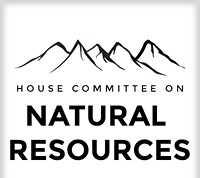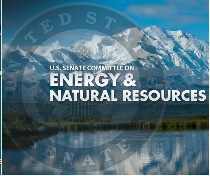Releases Quadrennial Energy Review
WASHINGTON, D.C. – April 21, 2015 – (RealEstateRama) — The Obama Administration is committed to taking responsible steps to modernize our energy infrastructure, create a clean energy economy built to last, combat climate change, and increase reliance on domestic energy resources.
That is why, today, the Administration released the initial installment of the first-ever Quadrennial Energy Review (QER), which examines how to modernize the Nation’s energy infrastructure to promote economic competitiveness, energy security, and environmental responsibility and take full advantage of American innovation and the new sources of domestic energy supply that are transforming the Nation’s energy marketplace. This report focuses on energy transmission, storage, and distribution (TS&D) infrastructure — the networks of pipelines, wires, storage, waterways, railroads, and other facilities that form the backbone of our energy system. The QER identifies opportunities these systems provide for a clean and secure energy future, as well as some growing and potential vulnerabilities of these systems. The report also proposes policy recommendations and investments to replace, protect, expand, and modernize TS&D infrastructure.
Later today, Vice President Joe Biden – along with Secretary of Energy Ernest Moniz and White House Office of Science and Technology Policy Director John Holdren — will highlight this report at an event at PECO in Philadelphia, Pennsylvania, where he will also discuss the importance of investing in our nation’s energy infrastructure.
The United States has the most advanced energy systems in the world, supplying the reliable, affordable and increasingly clean power and fuels that underpin every facet of our nation’s economy. But our energy landscape is changing dramatically. Solar electricity generation has increased 20-fold since 2008, and electricity generation from wind energy has more than tripled. During that period, the United States has also become the world’s leading producer of oil and natural gas combined.
The country is less dependent on foreign oil, as a percentage of national oil consumption, than it has been in more than 40 years. Today’s new cars can go farther on a gallon of gasoline than ever before. Between 2005 and 2014, U.S. consumption of motor gasoline fell more than two percent despite population growth, while the economy grew 13 percent. And policies to promote energy efficiency have contributed to keeping U.S. electricity consumption flat over that 10-year period, while total energy use declined nearly two percent.
These changes have implications for energy policy and for the Nation’s TS&D infrastructure. The focus of U.S. energy-policy discussions has shifted from worries about rising oil and natural gas imports to debates about how much and what kinds of U.S. energy should be exported, concerns about safety and resilience, integrating renewable sources of energy, and the overriding question of what changes in patterns of U.S. energy supply and demand will be needed—and how they can be achieved—for the United States to do its part in meeting the global climate-change challenge. The fact is that the need to mitigate global climate change by reducing greenhouse-gas emissions is already, under the President’s Climate Action Plan, driving changes in the mix of energy-supply options and end-use patterns, and that trend will continue.
Responding to these trends and issues, as well as supporting a 21st century economy, will require that we address the growing vulnerabilities posed by climate change, the evolving energy mix, cyber and physical threats, growing interdependencies, aging infrastructure, and workforce needs. As we are seeing, TS&D infrastructure is increasingly vulnerable to extreme weather events like hurricanes, flooding, and wildfires. Changes in the geography of domestic energy production stress the ability of existing infrastructures to move both liquid fuels and electricity from supply regions to demand centers. Congestion in the nation’s ports, waterways, and rail systems affect the timing and cost of moving not just energy products, but all commodities.
Modernizing the Nation’s TS&D infrastructure also presents the opportunity to enhance U.S. competitiveness in a global economy. And it will support jobs: approximately 1 million people were employed in energy transmission, storage, and distribution jobs in 2013. By making smart investments, there is the potential to support 1.5 million additional energy sector jobs for the transmission, storage, and distribution segment alone.
Addressing the opportunities, challenges, and vulnerabilities associated with TS&D infrastructure will require action by many parties in the private sector, and coordinated public sector action at the Federal, state, and local levels. This report presents a set of findings and recommendations focused on the Federal role, and organized around the high-level goals of energy security, economic competitiveness, and environmental responsibility. Its analytically derived objectives reflect an integrated assessment of the adequacy of existing transmission, storage, and distribution infrastructures to meet these goals. To set us down this track, the Administration is also unveiling two executive actions to modernize and enhance the resilience of our electric grid.
Taking Action Today To Increase Resilience
Building on today’s announcement, and to help guide us down a secure, safe, resilient and clean energy pathway, the Administration is also unveiling two executive actions to modernize and enhance the resilience of our electric grid:
- Partnership for Energy Sector Climate Resilience: The U.S. Department of Energy (DOE) is announcing a new Partnership for Energy Sector Climate Resilience that will improve U.S. energy infrastructure resilience against extreme weather and climate change impacts with the leading providers of electricity services. The partnership will begin with a convening at DOE with CEOs from the following 17 companies on April 30, 2015. The participating companies represent a broad array of investor-owned, Federal, municipal, and cooperative utilities, including:
- Con Edison
- Dominion Virginia Power
- Entergy
- Exelon
- Great River Energy
- Hoosier Energy
- Iberdrola USA
- National Grid
- New York Power Authority
- Pacific Gas and Electric
- PEPCO Holdings
- Public Service Electricity and Gas
- Sacramento Municipal Utility District (SMUD)
- San Diego Gas and Electric/Sempra
- Seattle City Light
- Tennessee Valley Authority (TVA)
- Xcel Energy
- Funding for Rural Electric Infrastructure: The US Department of Agriculture (USDA) is announcing $72 million to support six new rural electric infrastructure projects including major investments to drive solar energy. The loans will be used for transmission line improvements, including smart grid projects. For nearly 80 years, USDA’s Electric Programs have financed safe, reliable, and affordable electricity to help strengthen rural economies. Today’s announcement reinforces that commitment.
Development Of The QER
In June 2013, through the President’s Climate Action Plan and in response to a 2010 recommendation by the President’s Council of Advisors on Science and Technology, President Obama initiated a quadrennial cycle of energy reviews to provide a multiyear roadmap for U.S. energy policy. The President also announced the formation of a White House Task Force—co-chaired by the Director of the Office of Science and Technology Policy and the Director of the Domestic Policy Council and comprising 22 Federal agencies and offices with equities in energy—to develop the QER.
The President further directed DOE to provide analytical support for the QER and to help manage the interagency process through a secretariat at DOE. While DOE has undertaken periodic reviews and analyses of the energy sector (including in the “National Energy Strategy” of 1991 and the “Comprehensive Energy Strategy” of 1998), the last national energy policy report was published nearly 14 years ago, and the U.S. energy system has changed very significantly over that period. In the development of the QER, DOE convened a broad range of stakeholders across the Nation, including technical workshops, 13 formal public stakeholder meetings, and a special series of roundtables on methane emissions from TS&D infrastructure.
As directed by the President, the QER is envisioned as a focused, actionable document designed to provide policymakers, industry, investors, and other stakeholders with unbiased data and analysis on energy challenges, needs, requirements, and barriers that will inform a range of policy options, including legislation. Each installment of the QER will analyze and make recommendations for a key component of the energy value chain.
Highlights from each of the chapters in this year’s QER, include:
Ensuring the Resilience, Reliability, Safety, and Security of TS&D Infrastructure
Ensuring the resilience, reliability, safety, and security of TS&D infrastructure is a national priority and vital to American competiveness, jobs, energy security, and a clean energy future. To continue supporting these shared priorities, the QER recommends taking the following additional actions:
- Establishing a competitive program to accelerate pipeline replacement and enhance maintenance programs for natural gas distribution systems. DOE should establish a program to provide financial assistance to states to incentivize cost-effective improvements in the safety and environmental performance of natural gas distribution systems, through targeted funding to offset incremental costs to low-income households and funding for enhanced direct inspection and maintenance programs. The estimated cost for this program is $2.5-$3.5 billion over 10 years.
- Supporting the updating and expansion of state energy assurance plans, and establishing a competitive grant program to promote innovative solutions to enhance energy infrastructure resilience, reliability, and security. DOE should undertake a multi-year program of support for state energy assurance plans, focusing on improving the capacity of states and localities to identify potential energy disruptions, quantify their impacts, share information, and develop and exercise comprehensive plans that respond to those disruptions and reduce the threat of future disruptions. The estimated cost for this program is $350 – $500 million over 10 years. DOE should also establish a program to provide competitively awarded grants to states to demonstrate innovative approaches to TS&D infrastructure hardening and enhancing resilience and reliability. A major focus of the program would be the demonstration of new approaches to enhance regional grid resilience, implemented through the states by public and publicly regulated entities on a cost-shared basis. The estimated cost for this program is $3 -$5 billion over 10 years.
- Analyze the policies, technical specifications, and logistical and program structures needed to mitigate the risks associated with loss of transformers. As part of the Administration’s ongoing efforts to develop a formal national strategy for strengthening the security and resilience of the entire electric grid for threats and hazards (planned for release in 2015), DOE should coordinate with the Department of Homeland Security and other Federal agencies, states, and industry—an initiative to mitigate the risks associated with the loss of transformers. Approaches for mitigating this risk should include the development of one or more transformer reserves through a staged process.
Modernizing the Electric Grid
Electricity is central to the well-being of the Nation. The United States has one of the world’s most reliable, affordable, and increasingly clean electric systems, but it is currently at a strategic inflection point—a time of significant change for a system that has had relatively stable rules of the road for nearly a century. To enhance the development of a modern electric grid, the QER recommends:
- Providing state financial assistance to promote and integrate TS&D infrastructure investment plans for electricity reliability, affordability, efficiency, lower carbon generation, and environmental protection. In making awards under this program, DOE should require cooperation within the planning process of energy offices, public utility commissions, and environmental regulators within each state; with their counterparts in other states; and with infrastructure owners and operators and other entities responsible for maintaining the reliability of the bulk power system. The estimated cost for this program is $300 – $350 million over 5 years.
- Promoting grid modernization. DOE has made a comprehensive grid modernization proposal in the President’s Fiscal Year (FY) 2016 Budget request. The crosscutting proposal supports strategic DOE investments in foundational technology development, enhanced security capabilities, and greater institutional support and stakeholder engagement, all of which are designed to provide the tools necessary for the evolution to the grid of the future. The estimated cost for this program is $3.5 billion over ten years.
- Improving grid communication through standards and interoperability. In conjunction with the National Institute of Standards and Technology and other Federal agencies, DOE should work with industry, the Institute of Electrical and Electronics Engineers, state officials, and other interested parties to identify additional efforts the Federal Government can take to better promote open standards that enhance connectivity and interoperability on the electric grid.
Modernizing U.S. Energy Security Infrastructures in a Changing Global Marketplace
Until recently, the concept of energy security has focused on “oil security” as a proxy for “energy security.” It is clear, however, that energy security needs to be more broadly defined to cover not only oil but other sources of supply, and to be based not only on the ability to withstand shocks but also to be able to recover quickly from any shocks that do occur. To achieve this shared goal, the QER recommends:
- Investing to optimize the Strategic Petroleum Reserve (SPR’s) emergency response capability. DOE should analyze appropriate SPR size and configuration, and, after carrying out detailed engineering studies, DOE should make infrastructure investments to the SPR and its distribution systems to optimize the SPR’s ability to protect the U.S. economy in an energy supply emergency. It is anticipated that $1.5–$2.0 billion is needed for infrastructure life extension investments and to increase the incremental distribution capacity of the SPR.
- Updating SPR release authorities to reflect modern oil markets. Congress should update SPR release authorities to allow the SPR to be used more effectively to prevent serious economic harm to the United States in case of energy supply emergencies.
- Supporting fuels diversity through research, demonstration, and analysis. DOE and the Department of Defense should continue research and demonstration activities to develop biofuels that are compatible with existing petroleum fuel infrastructure, especially in aviation and for large vehicles. DOE should provide technical support to states, communities or private entities wishing to invest in infrastructure to dispense higher-level ethanol blends. DOE should ensure adequate support for data collection and analysis on fuels, like propane, that play an important role in the Nation’s diverse energy mix and are challenged by changing TS&D infrastructures.
Improving Shared Transport Infrastructures
Changes in the U.S. energy production and use affect the way that energy and other commodities are transported in the United States. The use of transportation modes (e.g., rail, barge, and truck transport) that are also shared by agricultural and other major commodities, has been joined by significant growth in the use of these transport modes by crude oil, refined petroleum products, and petrochemicals. To better manage shifting utilization patterns, the QER proposes:
- Supporting a new program of competitively awarded grants for shared energy transport systems. A new grant program – Actions to Support Shared Energy Transport Systems or ASSETS — should be established and supported at the U.S. Department of Transportation (DOT), in close cooperation with the DOE. This program should be dedicated to improving energy transportation infrastructure connectors. The estimated scale of ASSETS investment should be on the order of $2 – $2.5 billion over the next 10 years, which would likely mobilize $4 – $5 billion in non-Federal investment, based on typical TIGER cost shares.
- Addressing critical energy data gaps in the rail transport of energy commodities and supplies. Congress should fund the President’s FY 2016 Budget request for the Energy Information Administration to address critical energy transportation data gaps and continued data sharing with the Surface Transportation Board.
- Supporting alternative funding mechanisms for waterborne freight infrastructure. The Administration should continue to examine alternative financing arrangements for waterborne transportation infrastructure and to develop strategies for public-private partnerships to finance port and waterway infrastructure.
Integrating North American Energy Markets
The United States, Canada, and Mexico, as well as other North American neighbors, benefit from a vast and diverse energy TS&D network that has enabled the region to achieve economic, energy security, and environmental goals. To bolster this strong foundation, the QER recommends:
- Establishing programs for academic institutions and not-for-profits to develop legal, regulatory, and policy roadmaps for harmonizing regulations across borders. In partnership with universities, qualified not-for-profits, and relevant U.S. energy regulatory authorities, state/province, local, and national energy regulations will be compared to identify gaps, best practices, and inconsistencies with regulations in Canada and/or Mexico with the goal of harmonization.
- Increasing the integration of energy data among the United States, Canada, and Mexico. Provide resources for the Energy Information Administration to collaborate with its Canadian and Mexican counterparts to systematically compare their respective export and import data, validate data, and improve data quality. In addition, efforts should be taken to better share geographic information system data to develop energy system maps and review forward-looking assessments and projections of energy resources, flows, and demand.
- Promote Caribbean energy TS&D infrastructure. As part of a larger Caribbean strategy, the United States should support the diversification of energy supplies, including actions to facilitate the introduction of cleaner forms of energy and development of resilient energy TS&D infrastructure in the Caribbean.
Addressing Environmental Aspects of TS&D Infrastructure
Energy TS&D infrastructure affects the environment in a variety of ways. While it is important to address the direct environmental impacts and vulnerabilities of TS&D infrastructure, this infrastructure also has enormous potential to enable better environmental performance for the energy system more broadly. Key examples include carbon dioxide pipeline infrastructure to enable carbon sequestration, smart grid technologies to enable energy efficiency, and long-distance transmission to enable utilization of remote renewable resources. In addition to recommendations under other headings that will enhance the ability of the United States to achieve its environmental goals, the QER also recommends:
- Improving quantification of emissions from natural gas TS&D infrastructure. Congress should approve the $10 million requested for DOE in FY 2016 to help update Greenhouse Gas Inventory estimates of methane emissions from natural gas systems. The DOE and EPA should undertake a coordinated approach, building on stakeholder input, to ensure that new research and analysis is targeted toward knowledge gaps unaddressed by other researchers.
- Supporting funding to reduce diesel emissions. To protect workers and nearby communities through further reductions in diesel particulate matter emissions from ports and rail yards, the Administration proposed and Congress should provide funding for the Diesel Emissions Reduction Act and other related programs.
- Enacting financial incentives for the construction of CO2 pipeline networks. Congress should enact the Administration’s proposed Carbon Dioxide Investment and Sequestration Tax Credit, which would authorize $2 billion in refundable investment tax credits for carbon capture technology and associated infrastructure (including pipelines) installed at new or retrofitted electric generating units that capture and permanently “sequester” CO2.
Enhancing Employment and Workforce Training
The workforce needed to build, maintain, and operate energy infrastructures will continue to evolve and, in many cases, grow significantly. The heavy investment in new U.S. energy infrastructure that is anticipated over the next few decades, combined with the maintenance needed by current infrastructure systems and the looming retirement of a significant fraction of this sector’s labor pool, will stimulate the creation of a wide range of new job opportunities for skilled workers. This will pose an increasing challenge for workforce development and job training strategies. To overcome these challenges, the QER recommends:
- Supporting an energy-job skills training system through the interagency Skills Working Group. The training system should include new curricula, apprenticeship programs, industry-based credentialing standards, and innovative online learning systems.
- Expanding support for an open-source learning community to develop, facilitate, and expand use of state-of-the art courses in energy-related fields. These efforts should work to maintain and improve the National Training and Education Resource platform.
- Facilitating national credentials for energy occupations. DOE should support and facilitate an industry-led process of defining needed skills in a number of emerging occupations.
Siting and Permitting of TS&D Infrastructure
In the last decade, there has been a growing awareness of the gap between the times typically needed to permit new generation and production sources of energy and the much longer times needed for TS&D infrastructure. To continue to promote more timely permitting decisions while protecting our Nation’s environmental, historic, and cultural resources, the QER recommends:
- Enacting statutory authorities to improve coordination across agencies. Congress should authorize and fund the Interagency Infrastructure Permitting Improvement Center in the DOT, as set forth in Section 1009 of the Administration’s draft legislation for the GROW AMERICA Act.
- Prioritizing meaningful public engagement through consultation with Indian Tribes, coordination with state and local governments, and facilitation of non-Federal partnerships. Early and meaningful public engagement with affected residential communities, nonprofit organizations, and other non?Federal stakeholders through the National Environmental Policy Act process and other forums can reduce siting conflicts. Federal agency coordination with state and local governments and government-to-government consultation with affected Indian Tribes should remain a Federal Government priority. When possible, Federal agencies should co-locate energy infrastructure environmental review and permitting staff from multiple Federal agencies’ regional and field offices.
- Expanding landscape and watershed-level mitigation and conservation planning. When adverse impacts to the Nation’s landscape cannot be avoided or minimized any further, Federal agencies should seek innovative approaches to compensate for adverse project impacts commensurate with the scope and scale of the project and effects to resources. Through mitigation planning at a landscape, ecosystem, or watershed scale, agencies can locate mitigation activities in the most ecologically important areas















